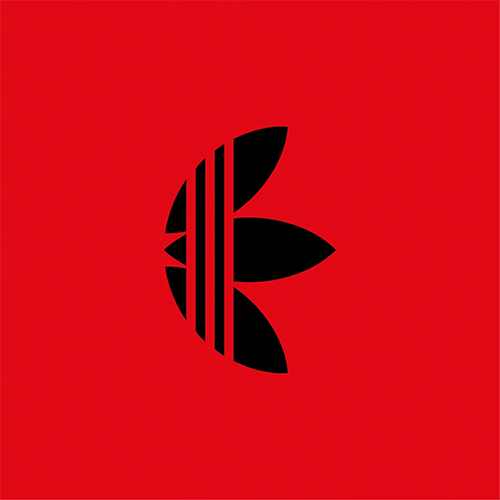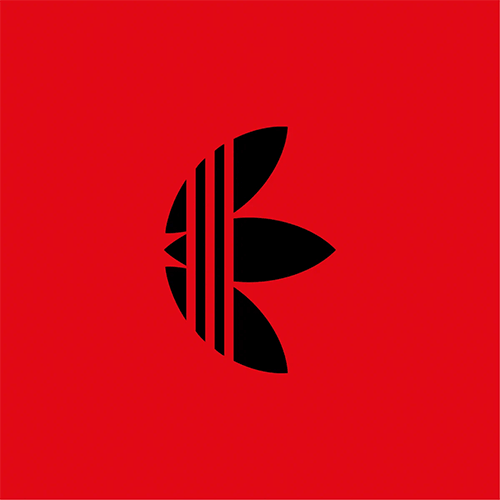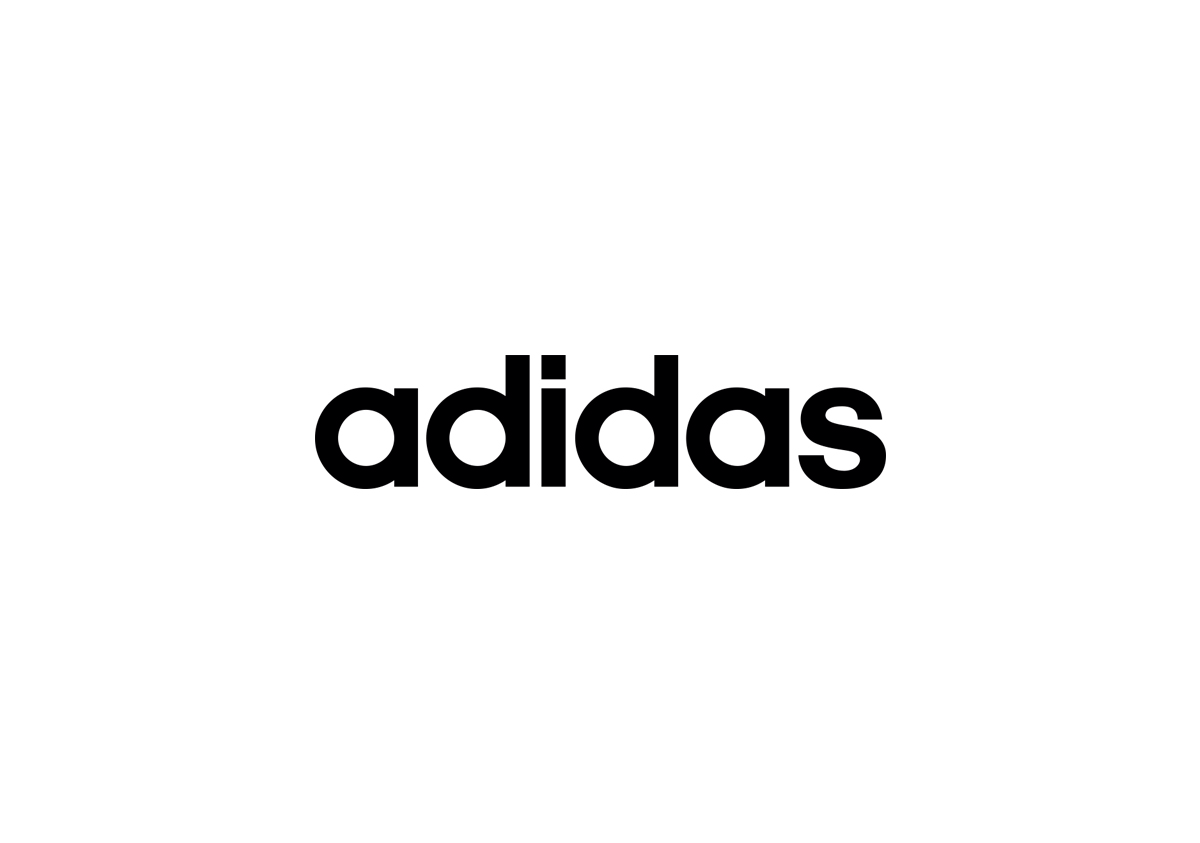Why The Adidas Blockchain Project Should Be On Every Enterprise’s Short List To Watch
One can only imagine the shock and awe in the adidas executive suite after one of its brands – adidas Originals – ran an "Initial NFT Offering" (INO, an acronym that most big brands and enterprises should get to know) under the heading "Into the Metaverse." The INO – launched with the support of Yuga Labs (Bored Ape Yacht Club), non-fungible token (NFT) influencer gmoney, and Punks Comic – generated over $22 million in the span of an afternoon in December 2021 (right around the historical height of NFT euphoria). It involved the sale of 29,620 ERC1155-compliant NFTs through the OpenSea marketplace at a primary market price of 0.2 ETH (approximately US$765 per NFT based on the USD value of Ether at the time of the sale).
Published:July 26, 2023

8 min read
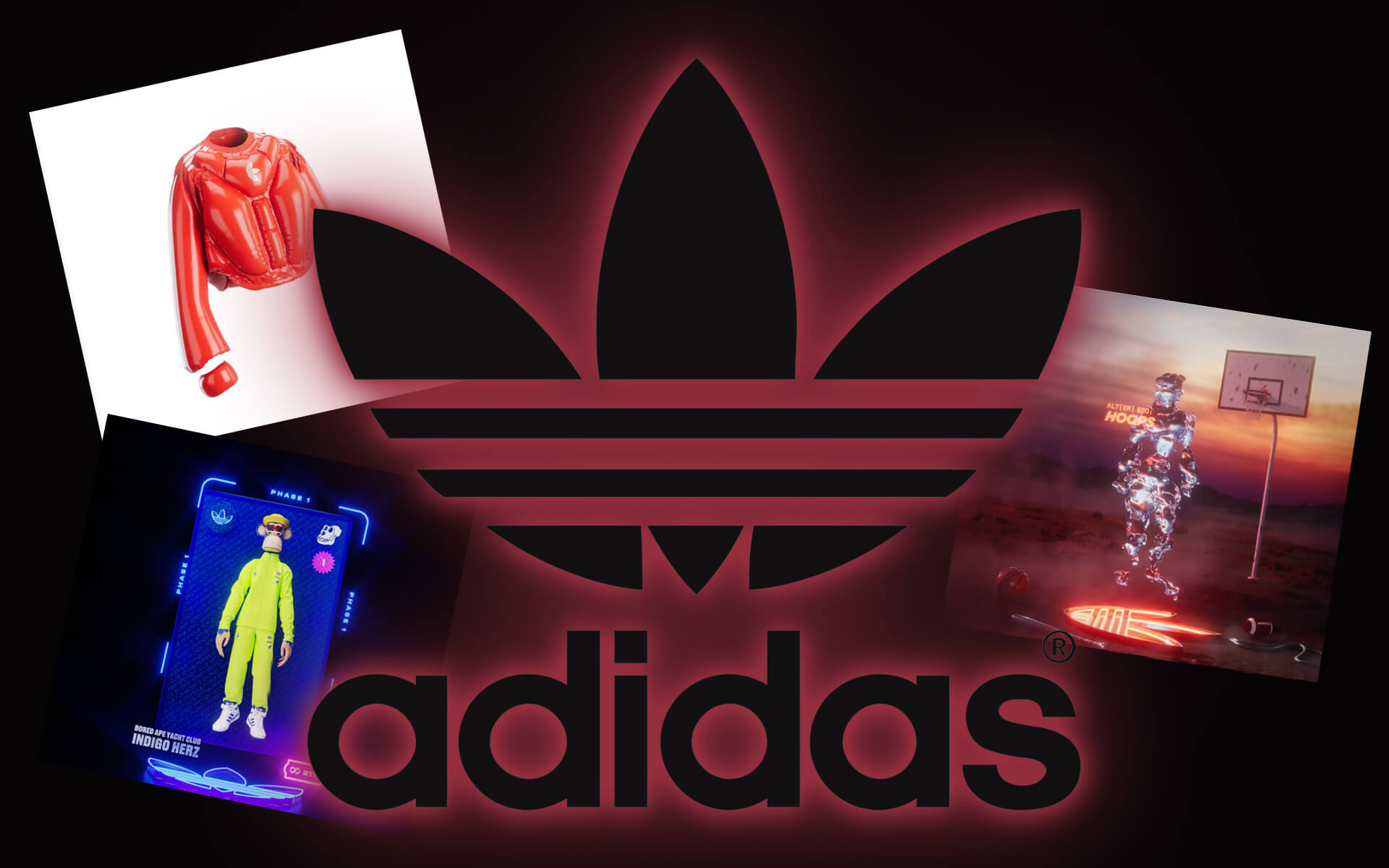

Although we may never know for sure, it’s probably the most money that adidas (74 years old at that moment) has banked over such a short period of time (especially without the involvement of bankers). When Blockchain Journal says “banked,” we literally mean “the funds are in the proverbial bank” (or, in this case, in adidas’ Ethereum account). No waiting for traditional financial middlemen to work through any floaty transaction management. No accounts receivables. No waiting to see if any credit card transactions unravel themselves (or finish “raveling” for that matter).
About the only remaining financial task left for adidas to do was to pay taxes on the revenue. Also, optionally, adidas had to decide what to do with the nearly $23 million of cryptocurrency that it suddenly had in its reserves. Should they convert some or all of it into US dollars or let it ride (an option that, given the benefit of 20/20 hindsight and 2022’s massive drop-off in Ethereum’s US dollar valuation, would have trimmed adidas’ profits)? Such are the corporate concerns once a public enterprise like adidas enters the blockchain world.
By the end of the INO, adidas had a major tiger by the tail and both the company’s future as well as that of Erika Wykes-Sneyd – the adidas executive who piloted the program to its extraordinary financial success – were on a completely different trajectory from the one they were on just days before. Even by her own admission (in a podcast interview recorded with Decrypt.co), Wykes-Sneyd – then the chief marketing officer of adidas Originals – was losing sleep as the INO date approached.
“There were many late nights where I was like, I could get fired for this,” said Wykes-Sneyd referring to the deals she was inking with pseudonymous parties like the founders of Bored Ape Yacht Club. In fact, adidas may have recently flown a little too close to that sun when it planned a similar partnership with the artist phenom FEWOCiOUS (aka “Victor”), only to cancel it at the very last minute.
About a week before moderators of adidas’ Discord channel notified its community members that a planned drop involving the artist was put on “hold,” FEWOCiOUS was accused of sexual assault. Although the company hasn’t publicly commented on whether the cancellation of the drop was connected to the accusations, it isn’t hard to imagine a big sports brand like adidas discontinuing a business relationship on the basis of such allegations.
As of the publication of this article, FEWOCiOUS has not been charged with, or convicted of a crime related to the claims. In response to Blockchain Journal’s email inquiry regarding the status of the relationship, adidas had nothing to add to the last official statement published to its Discord server: “The collaboration with FEWOCiOUS is on hold, with nothing further to share at this stage. We hope to be able to update the Community in due course.”
When it comes to preserving trust in their reputations, big sports brands are easily spooked. Such was recently the case when the NFL Network abruptly suspended Michael Irvin from on-air appearances after he was accused by a Marriott hotel employee of sexual assault (an accusation that Irvin not only denies, but that resulted in his filing of a $100M lawsuit against the hotel chain).
Later in the Decrypt.co interview, Wykes-Sneyd enumerated her own concerns in very corporate terms saying, “There’s this balance of wanting to be first, best, and only. But then you’re a 75-year-old brand and if you mess it up, you have a lot to lose so you’re balancing reputational risk as well.”
Despite the risks and some recalibrations along the way, $23 million later (not counting the smart contract-automated revenues that adidas continues to amass from the royalties it garnishes from secondary market sales of its various tokens), Wykes-Sneyd told Decrypt, “December 2021… all I know is it’s burned in my memory.”
It was clearly a turning point.
Now, adidas appears to be doubling down. Whereas the program launched under the umbrella of the adidas Originals brand (again, the brand for which Wykes-Sneyd was CMO), it has for the most part left behind that brand and the name “Into the Metaverse” (aka “ITM”) which was associated with the first two of the program’s three phases. The program’s third phase operates under the name “ALTS by adidas” by a relatively new Web3-specific group within adidas called “adidas /// Studio” (pronounced “three stripes studio”) of which Wykes-Sneyd is, not surprisingly, now the global VP and general manager. When adidas says “global,” it’s not kidding. As a testament to the borderless nature of cryptocurrency and blockchain, the ALTS by adidas program is already engaged with an audience spanning more than 130 countries.
Responding to questions regarding the pivot from “Into the Metaverse” to “ALTS by adidas,” /// Studio Global Head of Comms & Activation Stacey King told Blockchain Journal via email that “Into the Metaverse was part of adidas Originals from when it launched in December 2021 until January 2023, just after our 74-year-old brand introduced its first-ever virtual-only clothing collection of ‘adidas Virtual Gear’ in November 2022.” During this time, according to King, is when corporate investment in the strategy, development, and expansion of the brand’s presence in Web3 led to the formation of a dedicated Web3 Studio “with the intention to follow and shape culture wherever it is expressed.”
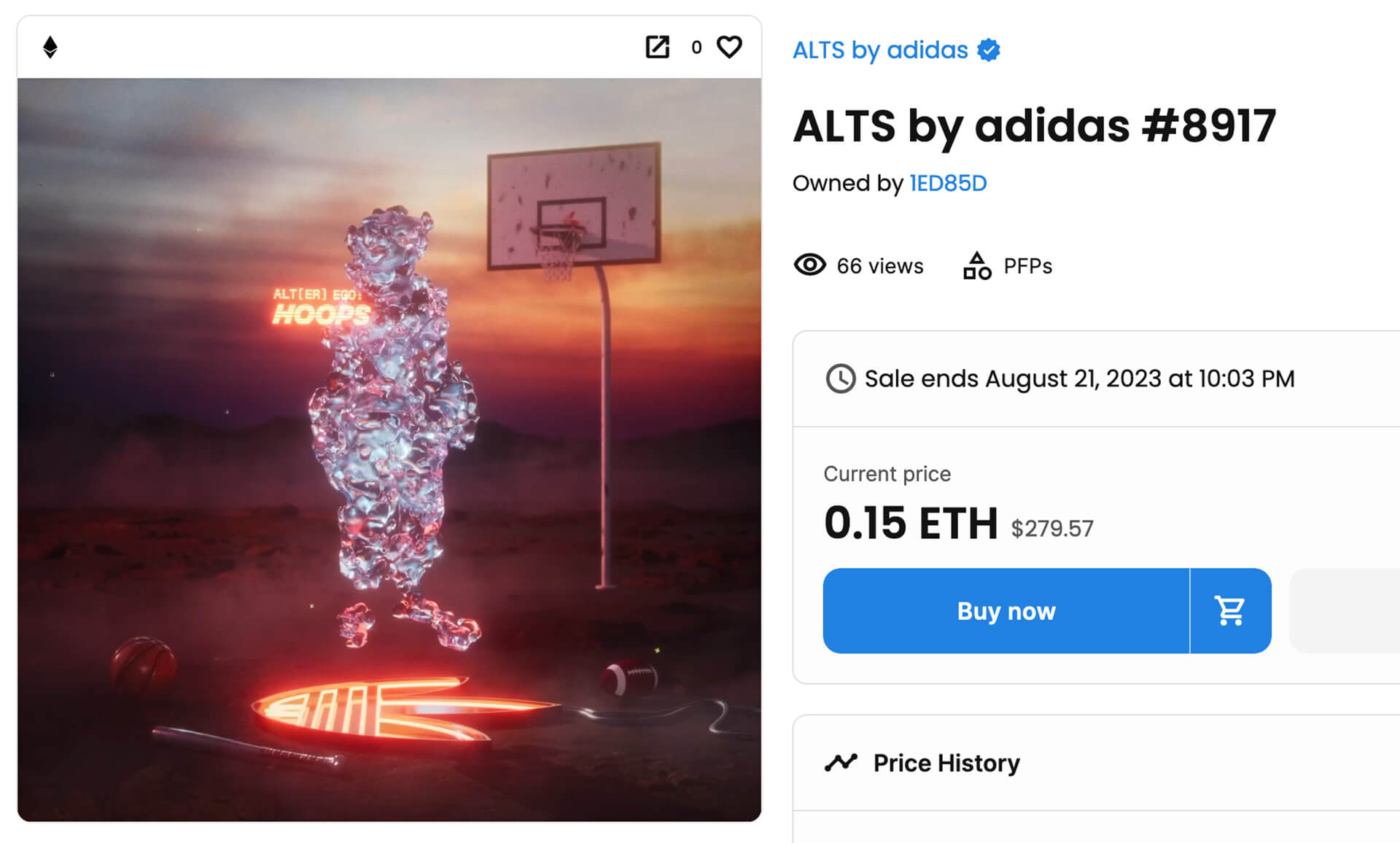

NFTs representing the adidas ALTS project’s eight different base-layer alter-egos such as Hoops, Strikes, Decos, and Amps are for sale on the secondary market via OpenSea’s NFT marketplace.
The word “ALT” was derived from the phrase “alter-ego.” At its current stage (when this article was published), the ALTS program was leading its followers on a journey where the general idea has been to construct a 3D avatar (the 2D version of which can be a user’s social media profile picture, aka “PFP”) made from collectible parts, some rarer than others (and therefore potentially more valuable for resale on the secondary market) that, taken together, are intended to be a means for expressing one’s alter-ego. According to Wykes-Sneyd, it’s the “alternate you; [the one] you don’t get to express all the time.” The parts consist of a base layer (essentially a humanoid figure themed around some of adidas’ existing brand vernacular like Hoops, Strikes, Decos, and Amps) that, presently, is open to customization of the head only with a handful of traits such as Dragon ears and Vapor Burnt eyebrows. Over time, more traits with which to customize the rest of one’s ALT body (including more virtual adidas-branded virtual apparel) will no doubt become available.
Said /// Studio’s King of these alter-egos, “By pushing the boundaries of identity, ownership and self-expression, ALTS by adidas was launched to connect the DNA of our brand’s Web3 Community to the DNA of adidas’ sports lifestyle brand.”
Sneakerheads or NFT investors? How about both?
If adidas was looking to attract two distinctly separate communities (the sneakerheads who already view anything rare from sneaker companies like adidas and Nike as being collectible and NFT aficionados, some whose main interest often lies in crypto-related investment opportunities), the public company could not have done a better job striking the balance. Judging by the activity on the ALTS Discord server (an absolutely integral part of the program’s operation), adidas has some extremely engaged customers that are along for the ride no matter what new adventure /// Studio decides to hatch. Meanwhile, many of the Ethereum-based tokens that adidas has minted so far, including those from the first Into the Metaverse phase (aptly named “Phase 1”) that were sold in the INO, are as shown in the image above, still for sale on OpenSea (a possible indication that their owners are seeking a return on investment rather than a long-term immersive engagement with adidas as a brand).
Where is adidas heading with its ALTS by adidas NFT program?
The multi-million-dollar question for holders of ALTS tokens, particularly after they’re done fully customizing their alter-egos, is “What else can I do with my ALT?” (besides use it for social media profile pictures). King only dropped hints, some of which were already known or assumed, when she told Blockchain Journal, “As this project develops, ALTS holders will be able to collect traits to build their unique avatar and earn exclusive access to collectibles and community experiences – all tied to the wider adidas brand.”
But in her interview with Decrypt.co, Wykes-Sneyd opened up about some of the innovative ideas that /// Studio is thinking about. The company experimented with token-gating when, during the NFT.NYC in April 2023, it held an exclusive after-hours physical event at its flagship store on 5th Avenue in New York City to which only NFT holders could attend (and receive a 20-percent discount on purchases). But Wykes-Sneyd hinted at a future where NFC-chipped adidas merchandise could serve as a proxy for NFT possession. This could involve a technical pairing of an NFC chip in the merchandise to a specific NFT (often described by the industry as a “phygital” or “digital twin” strategy). A scan of such NFC-chipped merchandise might be the ticket to event entry, exclusive in-store deals and other unique program benefits.
While she has personally stricken the word “phygital” from the adidas Web3 vocabulary, Wykes-Sneyd leans a bit into the word "metaverse.” Although she thinks the phrase is poorly defined, she admitted in the Decrypt interview that she keeps an eye on what other sports and lifestyle brands are doing. In June 2023, Nike’s own /// Studio-like Web3 studio – Nike Virtual Studios – announced a partnership with EA Sports where the virtual apparel and merchandise from Nike’s NFT-based .SWOOSH program will be interoperable with EA’s gaming environments. According to a press release, “In future EA SPORTS titles, EA SPORTS and Nike plan to make select .SWOOSH virtual creations available allowing members and players unique new opportunities for self-expression and creativity through sport and style.”
Apparently, adidas isn’t the only sports and lifestyle company with virtual self-expression on its mind.
For enterprises across a variety of industries, the ALTS program is one to not only learn from (in terms of what’s already happened), but one to keep an eye on as it moves forward. While Blockchain Journal will be here to report on the progress of the ALTS project, such reporting is no match for learning through first-hand participation in the program itself (which we highly recommend). It’s equally important to watch adidas for what’s happening behind the scenes – everything from organizing for success to managing business risk to choosing more of a pure Web3 approach (versus the Web 2.5 approach taken by other enterprises like Starbucks with its Odyssey NFT program) to the different technology selections that contribute to the patchwork quilt that now makes up the ALTS program.











